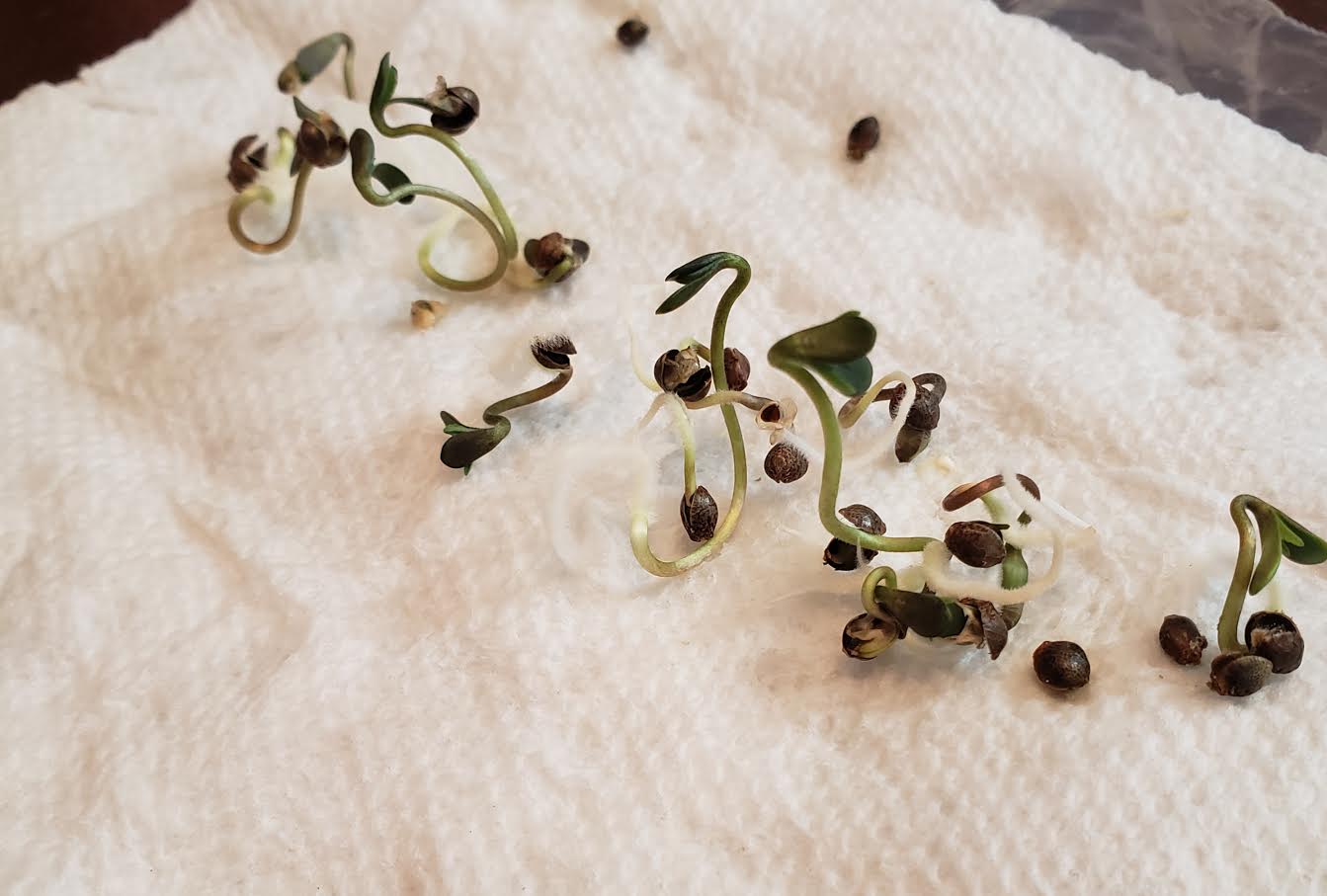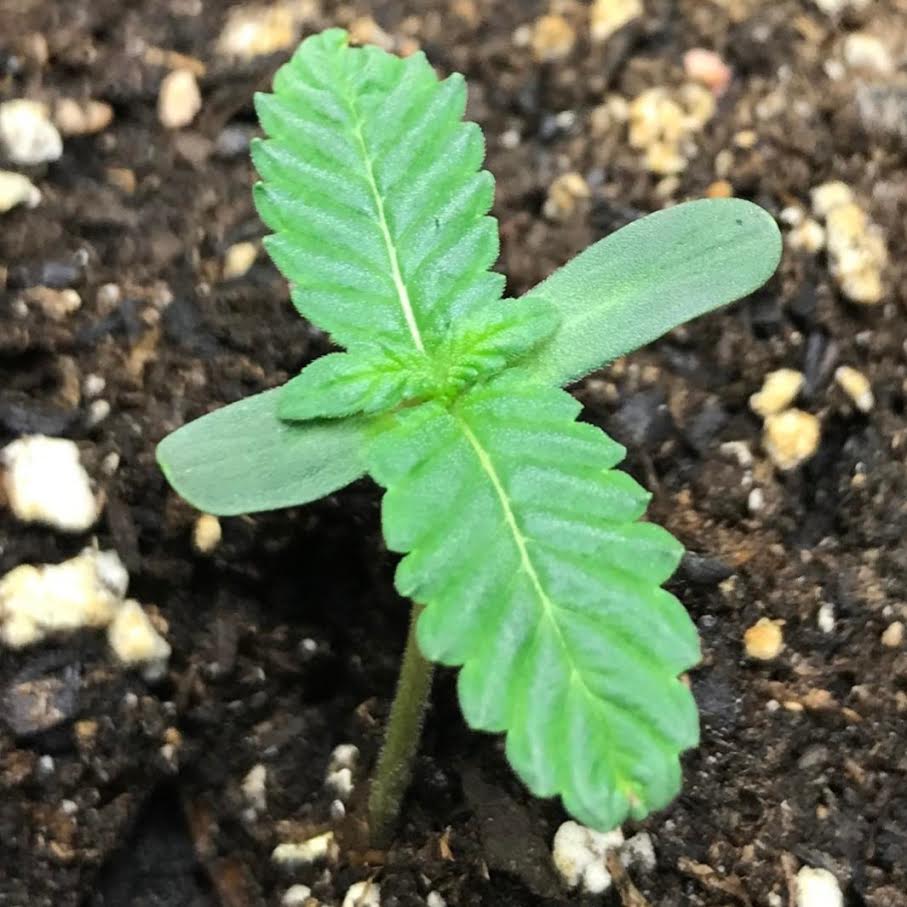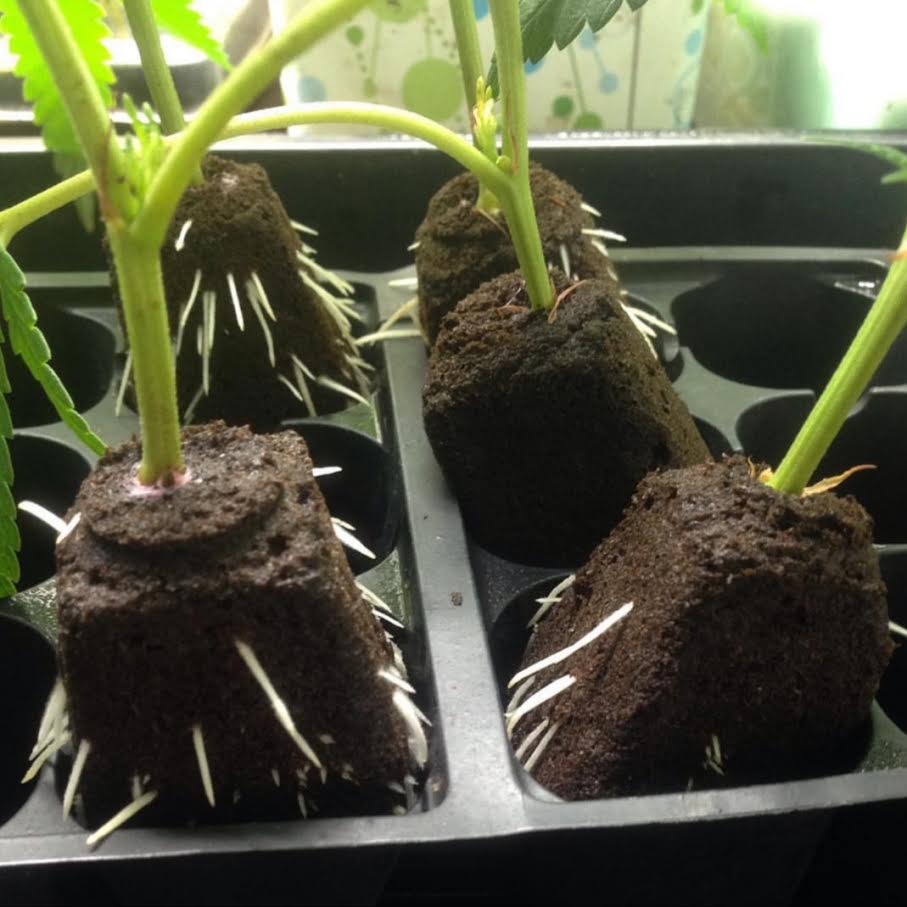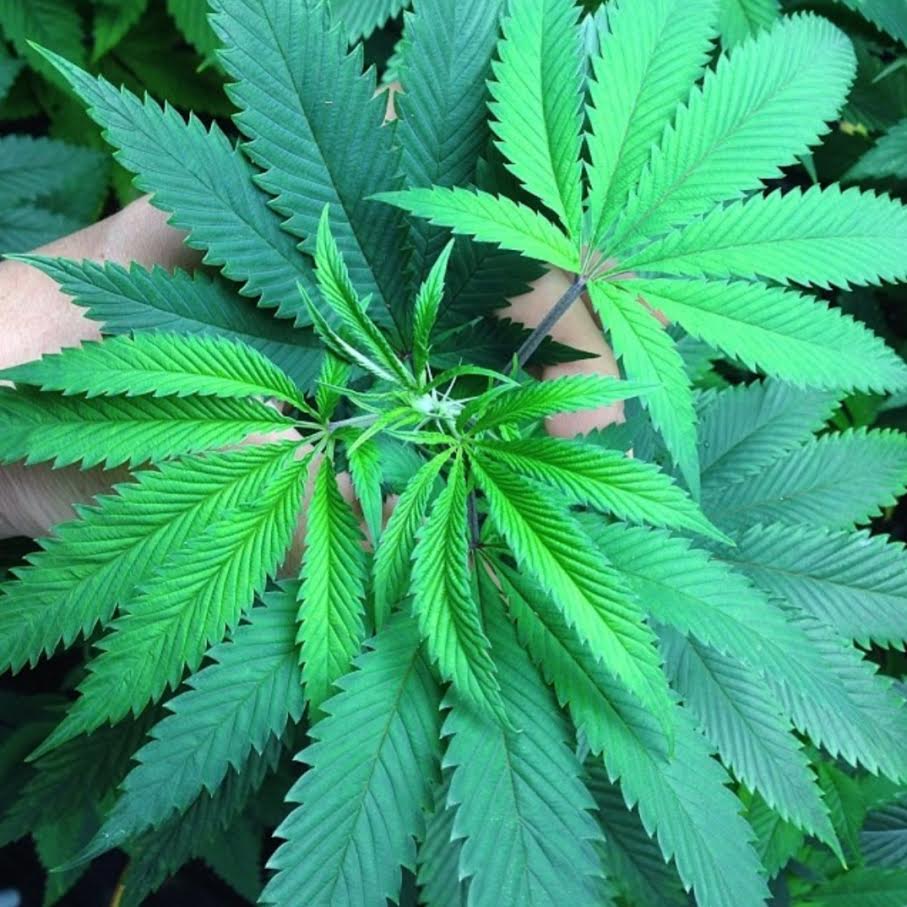Starting From Seed vs. Starting From Clone – Pros & Cons
It’s a personal preference on whether or not you should start from a seed or a clone. If you’re a beginner, it may take some time and practice to learn how to take a seed or clone from start to finish as they each have their own challenges when it comes to success. As far as the end flower is concerned, you will not be able to determine if it came from a seed or a clone. Both methods are capable of producing top shelf flowers. When deciding on which route you should go, consider your skill set, environment, end goal, and preferred method.
Starting From Seed
Seeds can be stored for several years, allowing you to start them whenever it’s most convenient. Although delicate, seeds are typically easier to get to root than a clone.
 Germinated seeds (left); A vegging seedling (right)
Pros
Germinated seeds (left); A vegging seedling (right)
Pros
- Easier to acquire
- Ability to start as needed
- Don’t require an indoor room
- Develop a tap root
- Increased vigor
- Unique phenotypes
- Bigger yields
- Takes 4-6 weeks longer to veg or harvest
- Variations with flowers
- May have males
Starting From Clones
A clone is a cutting taken from a mother plant. Once cut, it will need to be closely watched, especially until it develops roots. For first-time gardeners, it is usually easier to start from a seed unless you’re working with an already rooted clone.
 Rooted clones (left); A vegging clone (right)
Pros
Rooted clones (left); A vegging clone (right)
Pros
- Guaranteed female plant
- Faster time to veg or harvest
- Consistent flowers
- Harder to acquire
- Require an indoor room
- Lack a tap root
- Decreased vigor
- Possibly have a strain that many people have
- Increased likeliness of developing or containing diseases or pests
- Lower yields
